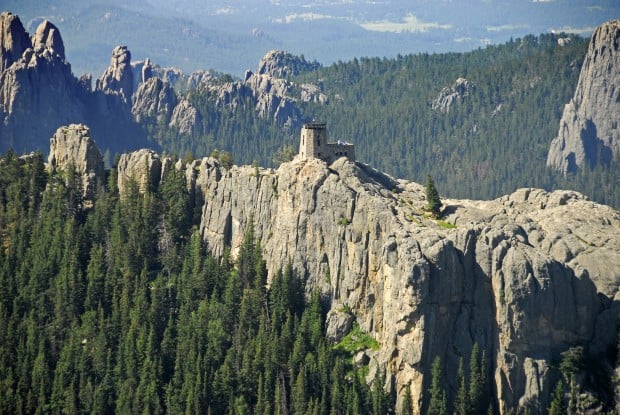After several years of study and debate, the U.S. agency that oversees the official names of places—the U.S. Board on Geographic Names—has ruled in favor of Native American groups, ordering that South Dakota's Harney Peak now be known as Black Elk Peak. The U.S. board voted unanimously on the change August 11.
Not far from the iconic Mount Rushmore, the newly renamed peak is the highest point in the state, as well as the highest point in the U.S. east of the Rockies. The peak lies in the Black Elk Wilderness of Black Hills National Forest, in Pennington County.

SOUTH DAKOTA
Pierre
Mt. Rushmore
Black Elk Peak
(Harney Peak)
7,242 ft
2,207 m
Sioux Falls
S. DAK.
100 mi
100 km
U.S.
NG MAPS
Since 1896, the 7,242-foot (2,207-meter) feature in the southwestern part of the state had been named for U.S. Army General William S. Harney. However, Native American groups have complained that the name was offensive because Harney led a series of battles against indigenous people. Most infamously, Harney’s men massacred Native women and children during a battle in 1855.
The name Black Elk Peak was formally proposed in October 2014. It honors Black Elk, or Nicholas Black Elk (1863-1950), who was a revered Oglala Lakota (Sioux) holy man.
The U.S. Board on Geographic Names spent several years researching the proposal, including getting input from the state, Native Americans, local people, map makers, and more. South Dakota's own board on geographic names, as well as several state legislators, had argued for keeping the name Harney Peak.
"However, the BGN also recognized the wishes of native peoples and many non-native South Dakotans that a new geographic name should be given to this feature that is regarded as a sacred site by several Tribes," the board says in a statement.
The agency added that it was following its legal mandate to avoid names that are "shown to be highly offensive or derogatory to a particular racial or ethnic group, gender, or religious group."
"The current name is painful and distressing to the Tribal people," an unnamed member of the board had said during deliberations. "That’s a reasonable justification for the change."
The U.S. Board on Geographic Names comprises experts appointed by six cabinet-level departments and other federal agencies. The board receives hundreds of requests each year to change the names of geographical features all over the country. In each case, it solicits input from the local community, local government, the state, and relevant land managers, such as from the parks or forestry service. The board reviews past and current maps and historical information and votes on the proposed change.
The renaming follows last year's order from the Secretary of the Interior to change Alaska's Mount McKinley to Denali. (See other sites that could be renamed.)


No comments:
Post a Comment